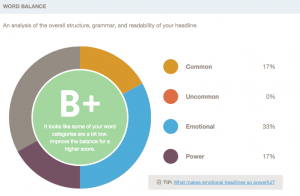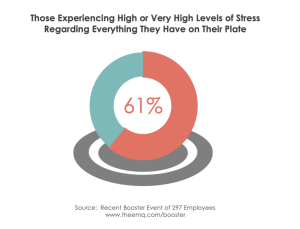— April 9, 2019
For centuries, innovative breakthroughs have reshaped societies and economies by expediting or simplifying work. The drive to create more efficient processes seems to be human nature.
In the information age, businesses are continually accosted by a slew of digital applications, the newest providers always claiming greater efficiency than the last. Organizations add more and more apps to keep up with the latest trends until efficiency begins to deteriorate.
- In a 2018 RingCentral survey, 69 percent of workers reported spending up to 60 minutes a day switching between work apps—totaling 32 work days a year.
- 70 percent of workers are required to use an average of four apps just for communication and are overwhelmed by the volume of work correspondence.
Acquiring a host of productivity software does not necessarily yield boosted efficiency. However, purposefully selecting the right tools and using them wisely can lead to promising results. Here are five tips to get your business on the right track.
Automate repetitive processes
Automation doesn’t replace humans; it transforms mundane, repetitive tasks into near effortless processes, freeing time for human work. Daily, predictable tasks like expense approvals and leave requests are channeled into streamlined workflows, sending data along a set course in a centralized system. Notifications alert stakeholders of responsibilities at the appointed time. Task clarifications are requested through the network directly instead of email.
Organizations have seen profound increases in productivity after automating workflows. When processing time for essential finance, human resources, and marketing procedures is reduced, employees are free to dedicate more time to creative work and customer experience improvement. Who doesn’t want to spend less time hunting documents, replying to emails, and filling out forms? Automation takes care of the monotonous tasks, ensuring prompt and compliant processes every time.
Integrate cloud systems
Cloud-based applications free companies of heavy burdens. The service providers handles in-house server rooms, hand coding for security, and system upgrades. But if applications are siloed, data integrity and efficiency are forfeited in tedious manual data transfers. Integration allows data to pre-populate across applications, expediting data entry, reporting, and workflow completion.
A decade ago all system integrations had to be coded from the ground up, but commonly used systems now come with built-in integration capabilities. Linking systems prevents information gaps, ensuring both front-end and back-end issues are promptly addressed to deliver top-notch customer service.
Evaluate performance
Tools like automation platforms offer real-time tracking, reporting, and analytics, but if no one examines the metrics or communicates the results, opportunities to elevate efficiency are lost. Forming corrective action points to correct inefficiencies is easy when reporting tools are properly utilized.
Assessing processes is crucial, but what about staff performance? If employees don’t know job requirements or expectations aren’t being met, how can they improve? Waiting an entire year to address problem areas, or neglecting to give praise for a job well done, negatively affects efficiency.
Annual reviews are on the decline as companies recognize the value of more frequent assessments. Consistent career development opportunities, including regular feedback, would keep 86% of millennials from leaving their position. Real-time, uncomplicated performance appraisals are easily attainable through automation to provide employees with actionable insights to enhance company value.
Work in public
When handling non-sensitive data, working from platforms where information can be publicly edited expedites projects. Passing documents or spreadsheets back and forth through email and tracking the latest version is painstaking. Collaboration tools like Google Docs provide relief from the old, aggravating system.
Usually, employees only have access to information that’s been shared directly through email or default app settings. Chat applications tend to occur one-to-one or between invited group members, leaving others who may benefit from the correspondence in unexpected ways out of the loop.
Open forums and shared platforms, however, enable all team members to keep up with current company news and offer unique insights. More knowledge is shared, and successes are celebrated, raising spirits and encouraging productivity. Inefficiencies are quickly spotted and snuffed out.
Explore a digital workplace
If too many apps reduce efficiency, then consolidating tools raises efficiency, but juggling different types of work seems to demand separate applications. For instance, automation is great for managing predictable processes, but what about one-time projects or cases?
A unified, scalable platform where employees can collaborate to manage both projects and automated processes is a real digital workplace. Gartner Vice President Carol Rozell says, “The digital workplace promises a more flexible, engaging, and intelligent work environment that can exploit changing business conditions.” A single platform interconnecting all projects and collaboration tools delivers all of the above.
Strategic tools, not more tools
Infrastructures, procedures, and culture differ in every business—what works for one company may not work for the next. Workplace efficiency isn’t achieved by swiping the latest business solution to try out, but by deciphering which tools directly meet workflow and collaboration needs. When strategically chosen business solutions connect operations seamlessly under intentional management, efficiency can reach new heights.
Business & Finance Articles on Business 2 Community
(58)
Report Post





